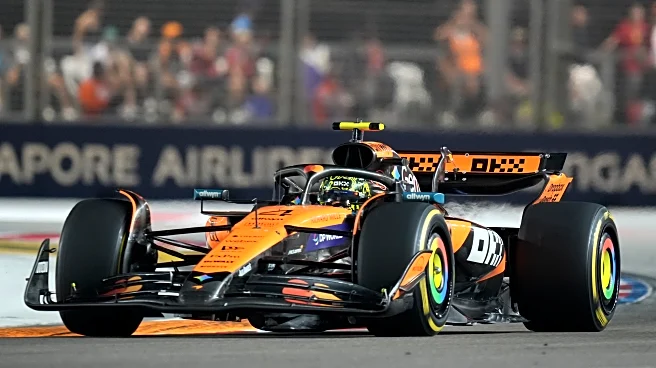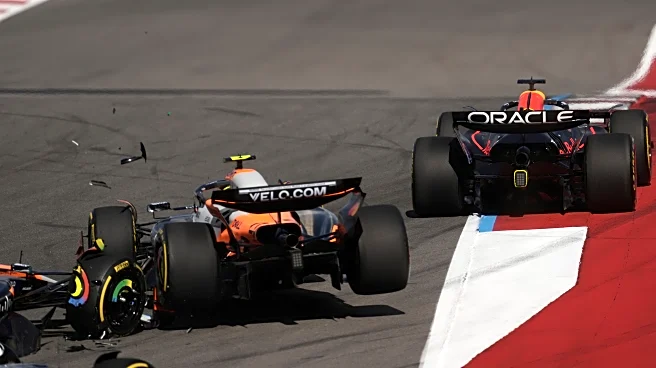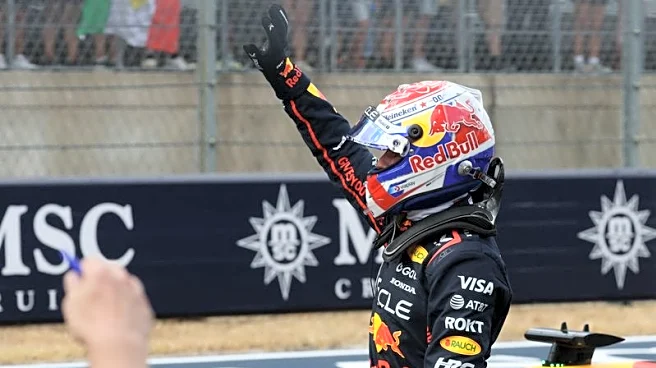What's Happening?
During the United States Grand Prix Sprint in Austin, McLaren drivers Lando Norris and Oscar Piastri were involved in a first-lap collision, resulting in both cars retiring from the race. This incident
follows a similar situation at the Singapore Grand Prix, where Norris was penalized for contact with Piastri. In Austin, Piastri attempted to overtake Norris at the first corner but collided with Nico Hulkenberg's Sauber, which led to a crash involving both McLaren cars. Max Verstappen capitalized on the situation, winning the Sprint and closing the gap in the Drivers' Championship. McLaren's leadership initially blamed Hulkenberg but later retracted the criticism, acknowledging the complexity of the incident.
Why It's Important?
The collision at the United States GP Sprint highlights ongoing challenges within McLaren's team dynamics, particularly in managing the competitive relationship between Norris and Piastri. The incident has significant implications for McLaren's strategy in the Drivers' Championship, as it allowed Verstappen to gain valuable points. The team's handling of internal penalties and public statements about driver responsibilities could affect team morale and performance. The situation underscores the delicate balance required in managing team orders and driver autonomy in high-stakes racing environments.
What's Next?
As the Formula 1 season progresses, McLaren will need to address the internal dynamics between Norris and Piastri to prevent further incidents. The team is expected to review the collision and potentially adjust their approach to driver management and penalties. With the next race in Mexico City, McLaren's strategy and any changes in team orders will be closely scrutinized. The outcome of these decisions could influence the team's performance in the remaining races and their standing in the championship.
Beyond the Headlines
The incident raises questions about the broader implications of team management in Formula 1, particularly regarding the balance between competition and collaboration among teammates. The public nature of McLaren's internal penalties and the subsequent media scrutiny highlight the pressures teams face in maintaining transparency while managing competitive tensions. This situation may prompt other teams to reassess their approaches to similar challenges, potentially influencing the culture and practices within the sport.













